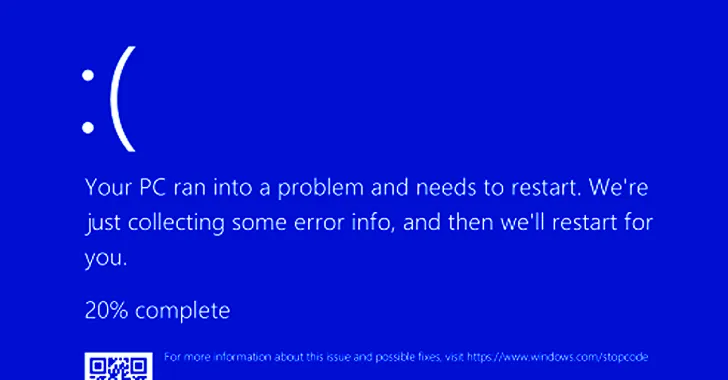Software crashes are usually seen as temporary irritations—those sudden program freezes, application errors, or system reboots that interrupt a user’s workflow. Yet the ripple effects from these failures can be both substantial and far-reaching, going well beyond a brief interruption on an office desktop. In many cases, organizations pay a significant price when an application or service unexpectedly goes offline. Losses can include more than just productivity; they can extend to damaged reputations, hasty financial losses, and a gradual erosion of trust from both customers and employees. While technology has advanced rapidly, with increasingly complex software powering everything from smart appliances to autonomous vehicles, these very complexities often heighten the risks of crashes. Hidden costs can stealthily accumulate before anyone realizes the full impact.
The most conspicuous expense is typically productivity loss. Even a short-lived software outage can leave entire teams or departments idle. Imagine a large call center dependent on a proprietary customer relationship management (CRM) platform. If that CRM tool crashes repeatedly, hundreds of agents might sit idle, unable to handle service inquiries or record sales. Each minute of downtime translates to lost revenue opportunities and frustrated customers. Although these immediate losses are visible on a balance sheet, their longer-term consequences—like clients’ decision to do business elsewhere—are often trickier to quantify. In industries where margins are tight, a few mishandled deals or unprocessed transactions can be the difference between meeting or missing quarterly targets.
Beyond immediate productivity losses, software crashes can erode staff morale. Repeated disruptions frustrate users who must endure reboots or re-enter lost data. Developers and IT personnel, in turn, feel constant pressure to patch or rebuild flawed code, often while under intense scrutiny from upper management. Persistent instability can cultivate a blame culture, where each group shifts responsibility for system failures. This environment stifles innovation and can lead high-performing employees to seek positions where they can focus on forward-thinking development rather than firefighting. As a result, the organization might experience more turnover and incur higher hiring costs to backfill demoralized teams.
Reputation risk is another critical factor. When software crashes affect customer-facing systems—like e-commerce websites, mobile banking apps, or airline check-in platforms—the public notices quickly. Angry social media posts and negative news coverage can damage brand image, especially if the company fails to communicate transparently and fix the issue promptly. In a world where consumers expect near-instant service, any prolonged downtime can shift them toward competitors. Over time, repeated or severe outages may come to define a brand as unreliable, undermining years of marketing investments and tarnishing the company’s position in its market sector. Conversely, rivals who consistently deliver stable experiences stand to gain new clientele simply by demonstrating reliability that a failing competitor lacks.
Financial damages from crashes extend far beyond lost sales. In heavily regulated sectors, unplanned downtime may violate service-level agreements (SLAs), triggering penalty clauses or refund obligations. A cloud provider that suffers repeated outages could owe partial refunds or service credits to corporate clients who missed their own business commitments. Meanwhile, certain laws mandate breach disclosure if a system crash led to data corruption or unauthorized access, raising the possibility of substantial fines. Regulators increasingly frown upon organizations whose design flaws or neglected patches cause widespread service instability, expecting them to adopt robust risk management and redundancy. Hence, an incident that begins as a software glitch can culminate in legal battles or investigations that cost more than any short-term outage.
A lesser-discussed area of cost involves forensics and remediation. Diagnosing a stubborn software crash can absorb hundreds—if not thousands—of staff-hours. Development teams might comb logs line by line, searching for obscure concurrency bugs or memory leaks. External experts could be hired at premium rates to consult on kernel debugging, database performance tuning, or specialized frameworks. The affected organization often has to juggle these troubleshooting tasks alongside normal operations. Some might bring in emergency engineers on weekends, incurring overtime pay, or rely on third-party “war room” services. Meanwhile, partial fixes sometimes introduce new bugs or break previously stable components, necessitating further rounds of patching. Over weeks or months, this iterative cycle weighs heavily on budgets and technical morale.
Even after identifying root causes, organizations wrestle with how to prevent recurrence. If a software crash reveals deeper architectural flaws—like reliance on a single point of failure or an aging codebase developed in a rush—executives might choose a major overhaul. These modernization efforts can demand capital expenditures for upgraded infrastructure, retraining staff on safer development practices, or migrating to a more stable platform. The changes might also force the company to temporarily scale back new feature development. While these improvements yield eventual resilience, the immediate costs can appear daunting. For smaller businesses or startups, even moderate-scale modernization can absorb funds earmarked for expansion or marketing, constraining growth.
Another hidden cost is the damage to knowledge capital when repeated crashes overshadow innovative work. Developers embroiled in code triage might shelve planned enhancements, leaving the product stagnant in a fiercely competitive market. Canceled features or postponed releases impair the product’s value proposition, hurting sales and market share. Meanwhile, negative publicity around frequent outages can sap employee pride. Skilled engineers might exit for employers that champion cutting-edge R&D, rather than perpetually patching old systems. This talent drain compounds the cycle, as inexperienced replacements grapple with complex legacy code. Over the long run, an organization that fails to foster stable software may fall behind technologically, missing key trends or failing to meet evolving customer expectations.
Technical debt often forms the bedrock of these recurrent software crashes. As teams hurry to deliver features, they may defer robust testing or skip refactoring. Over time, such shortcuts accumulate, effectively turning parts of the codebase into a ticking time bomb. When the system eventually buckles under real-world loads, the blame often lands on the last patch or update. Yet the deeper root cause may be months or years of neglected code quality. Paying down this debt—through rewriting modules, implementing automated tests, or restructuring architecture—can be financially painful. However, companies that systematically address technical debt find that crash frequency drops and new development becomes easier, ultimately saving money in the long term.
Meanwhile, large-scale software outages can force complicated communications strategies. Crisis PR teams hustle to placate external stakeholders, while internal communications must keep staff aligned. If major clients are impacted, account managers scramble for updates, anticipating questions about resolution times and compensation. Meanwhile, the broader workforce may receive email blasts urging patience or detailing new operational workarounds. In worst-case scenarios, top executives appear in public forums to apologize or provide timelines for restoration. Each layer of communication demands accuracy and consistency. Mistakes—like underestimating resolution times—compounded by repeated delays can spark resentment and suspicion, potentially amplifying negative press coverage and alienating employees.
For those industries where safety is paramount—like aviation, healthcare, or critical infrastructure—the hidden costs of software crashes can be life-threatening. A glitch in a hospital’s patient management system might delay treatments or cause medication errors, leading to real harm and subsequent lawsuits. Similarly, an unresponsive control system in a power grid could trigger widespread blackouts or endanger maintenance crews. The moral and legal ramifications in such cases far exceed typical cost concerns, emphasizing the high stakes of reliable software in contexts involving human life. As a result, these sectors invest heavily in rigorous testing and redundancy, though even they cannot achieve absolute immunity from all possible software failures.
Guarding against the hidden costs of crashes requires both cultural and technical shifts. On the cultural side, organizations benefit from a DevOps or Site Reliability Engineering (SRE) mindset that fosters collaboration between development, testing, and operations. Teams share responsibility for uptime and code quality, encouraging proactive refactoring and stress testing. Some businesses adopt chaos engineering—intentionally breaking components under controlled conditions to see how systems cope. By normalizing the idea of “failure injection,” they can discover vulnerabilities and fix them before real incidents happen. On the technical side, well-architected redundancy at every layer—databases, services, networks—ensures that a single crash does not cascade into a global outage. Implementing robust monitoring, with alert thresholds set for unusual behavior, helps isolate early symptoms of a bug or resource exhaustion before they blossom into a full-scale breakdown.
Even as these strategies help, no system is entirely crash-proof. The complexities of large-scale software, with dependencies spanning multiple microservices, frameworks, and APIs, guarantee that unexpected edge cases will occasionally surface. What matters is how organizations prepare and respond. Those that have mature incident management protocols, thoroughly practiced in real or simulated drills, bounce back faster. They minimize data loss, communicate transparently, and gain user trust by demonstrating competence in a crisis. Meanwhile, companies that treat crashes as anomalies or flukes may manage to limp along—until the next, more serious outage arrives.
From an executive viewpoint, acknowledging the hidden costs of software crashes is the first step toward meaningful change. Investing in code quality, continuous integration/continuous deployment (CI/CD) pipelines, and a culture of shared ownership around reliability can seem expensive in the short term. Yet these measures pay dividends by avoiding the massive disruptions that come with repeated system failures. Organizations that successfully prioritize reliability often discover that the same discipline fosters better innovation. Freed from firefighting, teams channel energy into building robust new features that delight customers, rather than patching fragile ones. The bottom-line benefits become clear when analyzing not just direct monetary losses, but the intangible gains—like stronger user loyalty, less staff turnover, and a stable platform ready for future expansions.
In the final analysis, software crashes levy costs both obvious and hidden, from lost work hours and brand damage to staff burnout and technical debt accumulation. With technology entrenched in nearly every facet of modern commerce and communication, these events can strike any organization—startups, global enterprises, or public agencies—at a moment’s notice. The way forward requires a blend of cultural adoption (like DevOps), robust technical safeguards (redundancy, thorough testing, chaos engineering), and leadership commitment to code quality. By proactively addressing the many facets of reliability, companies reduce the risk of catastrophic outages that drain resources, morale, and user confidence. Over the long haul, this vigilance is far more cost-effective than endlessly patching crises. The hidden costs of software crashes may be insidious, but they’re not invincible to a well-prepared, forward-thinking strategy that puts reliability at the heart of software development and operations.


